There have been many myths and different opinions in the past regarding the subject of the bovine hoof. Part of the reason why it is such a frequently discussed topic is that it is so difficult to work on the feet of cattle. Unlike horses, cattle cannot be trained to lift one foot while standing on the other three legs. In fact, it is extremely difficult for cattle to stand on three legs, which is why specialised equipment is needed.

Note the broken toe because of
too much leverage on the toes.
Many questions arise from producers who want to have a better understanding of hoof care. Although a lot of information is available in the dairy industry, the beef industry is lacking in this regard. As a stud breeder and commercial beef producer, I have a special interest in beef cattle as well as hoof-related issues.
Having trimmed the hooves of over 200 000 cattle and having trained people the world over, I was asked to share my knowledge and experience in the bovine hoof care industry in a practical and illustrative way. This is part one of a series in which I will address some of the most frequently asked questions.
Importance of hoof care

that is restrained in the hoof
trimming chute.
Hoof-related issues have become more relevant because of feedlots. More specifically, it pertains to issues seen in long-fed cattle that need to stay in a feedlot for up to 500 days.
At the heart of the beef industry is the commercial producer who supplies calves to the feedlot. In order to supply the desired product, producers utilise stud breeders to supply them with exceptional bulls. Since breeding and rearing cattle often come with a hefty price tag, the entire supply chain can benefit from a better understanding of hoof care, as lame cattle constitute a considerable loss in monetary terms.
The following facts will be used as the foundation for the series:
- Hooves grow at a rate of 5mm per month.
- The toe end of the hoof is harder than the heel.
- Hooves need to wear down so as to balance the growth-to-wear ratio.
Managing the growth-to-wear ratio
If hooves grow 5mm per month, a ten-year-old beef cow produces 600mm of hoof horn in her lifetime. This is hard to believe simply because we hardly ever see a productive, veld-reared cow with long hooves. This is due to the growth-to-wear ratio. Some producers use the term ‘grown out claws’ when they refer to ‘long claws’. Referring to grown out claws is not correct, as all claws are supposed to grow out; what they are not supposed to be, however, is long.
The foot is a living organ that produces its own protective layer as a ‘shoe’ in order to cover large areas of land and traverse a variety of surfaces. If an injury occurs on the hoof and it cannot produce new horn to heal itself, as in the case of a skin injury, the animal might become lame.
 |  |  |
| The toe needs to be trimmed shorter and the sole on the toe must be removed. | Poor hoof angle on an untrimmed claw. | Good hoof angle on a trimmed claw. |
The area of the hoof where the weight of the animal and other forces are most intense is harder and more resistant to wear. If this is not the case, many more cattle would be lame. In extensive farming setups, the animal can control its own wear-to-growth ratio by moving more or moving less, and by favouring softer or harder surfaces at certain times of the year.
So why do we see long and overgrown feet? This occurs the moment the ratio of growth exceeds the ratio of wear. This condition is more prevalent in cattle that are confined in a kraal, soft paddock or feedlot. To solve the problem of long and overgrown feet, some producers may drive cattle over a rocky area or a hard road. The risk of this practice is that the claws can easily break off too short, which can result in lameness.

Angle of the hoof
Another factor that many do not consider is that the angle of the hoof decreases when the toe grows too long, because of additional horn production on the sole on the toe end. The only effective way of shortening the claws and rectifying the hoof angle, is by trimming the feet.
Look out for part 2 in this series in February. – Jaco de Bruin, consultant, Dairysmid
For more information, send an email to office@dairysmid.com
or visit www.dairysmid.com.





